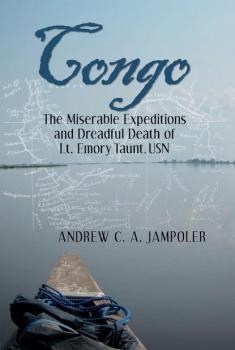ТОП просматриваемых книг сайта:
Andrew C. Jampoler
Список книг автора Andrew C. JampolerАннотация
In the aftermath of the Napoleonic Wars, the U.S. found its merchants and traders locked out of their traditional markets in Europe and the Caribbean. Hoping for new and profitable American trade relationships, President Andrew Jackson dispatched an unemployed ship-owner and merchant with no diplomatic experience on a secret mission to negotiate with Eastern potentates in their courts. Edmund Roberts’ mission was to formalize American trade with these exotic places—Oman, Siam, Cochin China, and Japan—on a most favored nation basis, allowing for American consuls to openly advance and protect American interests and citizens in their host country. After sailing almost 70,000 miles in five years in the ill-fated USS Peacock, Roberts was successful in negotiating treaties with Oman and Siam, but he failed in Cochin China, and he died before setting sail to Japan. Peacock, first flagship of the Navy’s new East Indies Squadron, forerunner of the U.S. Seventh Fleet, outlived him by only a few years.
Аннотация
RMS Rhone, just three years old then and the pretty queen of the Royal Mail Steam Packet Company’s fleet, sank in the great St. Narciso hurricane of late October 1867, a devastating category three storm that bored a line east to west atop the Antilles, and ruthlessly thinned the islands’ population while it sank some seventy ships in port and local waters.Fleeing from Tortola across Drake Strait and toward open water at full speed, through the backside of the hurricane and nearly blinded by rain and spray, Rhone drove aground on Black Rock, in the shallows off Salt Island, shoved to her fate by 140 mile and hour winds. The impact and the subsequent explosion of her boiler tore the 310-foot long ship in half. One hundred twenty four drowned that morning or were scalded to death in the engine room. Only twenty-three survived.Five other company ships went down, too. Remarkably, a sixth company ship, the tiny paddle steamer Conway managed to live through the day, although dismasted and with her deck swept clear of funnel, paddle boxes, and rigging.This is the story of those ships, and the story of Jeremiah Murphy, a salty hardhat diver, who spent most of the next six years salvaging the wreck of the Rhone and clearing neighboring harbors of the storm’s detritus. Without a doubt, Black Rock and Blue Water will appeal powerfully to readers of maritime history, and to recreational divers of all ages.
Аннотация
Lauded for his ability to tell compelling, true adventure stories, award-winning author Andrew C.A. Jampoler has turned his attention this time to a young American naval officer on a mission up the Congo River in May 1885. Lt. Emory Taunt was ordered to explore as much of the river as possible and report on opportunities for Americans in the potentially rich African marketplace. A little more than five years later, Taunt, 39, was buried near the place he had first come ashore in Africa. His personal demons and the Congo’s lethal fevers had killed him. In 2011, to better understand what happened, Jampoler retraced Taunt’s expedition in an outboard motorboat. Striking photographs from the author’s trip are included to lend a visual dimension to the original journey.Readers join Taunt in his exploration of some 1400 miles of river and follow him on two additional assignments. A commercial venture to collect elephant ivory in the river’s great basin and an appointment as the U.S. State Department’s first resident diplomat in Boma, capital of King Leopold II’s Congo Free State, are filled with promise. But instead of becoming rich and famous, he died alone, bankrupt, and disgraced. Jampoler’s account of what went so dreadfully wrong is both thrilling and tragic. He provides not only a fascinating look at Taunt’s brief and extraordinary life, but also a glimpse of the role the United States played in the birth of the Congo nation, and the increasingly awkward position Washington found itself as stories of atrocities against the natives began to leak out.



